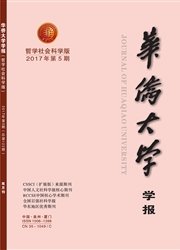

 中文摘要:
中文摘要:
全球电子商务的飞速发展,丰富了跨境贸易的多样性,对跨境供应链提出更高的要求。综合考虑跨境贸易平台因素及相关影响因素,建立了跨境进口产品定价模型,利用Matlab分析了需求扩散强度、单位产品税收差与传统贸易渠道产品价格、跨境电商渠道产品价格、生产商利润的相关性。研究结果表明:在传统贸易渠道和跨境电商渠道中,如果产品税收差别较小,需求扩散强度较低时,采取第三方平台同步销售策略能够给生产商带来显著的利润,当需求扩散强度较高时,第三方平台延后销售策略则是最佳的选择;而在需求扩散强度相对稳定的情况下,选择第三方平台延后销售策略,可以有效的节约生产商平台投入成本,减少渠道冲突,提高生产商收益。
 英文摘要:
英文摘要:
The rapid development of global e-commerceenriches the diversity of cross-border tradeand puts forward higher request to the cross-border supply chain. Comprehensively considering the cross-border trade platform factors and related influencing factors, this paper establishes cross-border import product pricing model and analyzes the correlation between the demand diffusion intensity, the unit product tax and the traditional trade channels prices, cross-border electricity prices and manufacturers profit based on Matllab. The results show that in the traditional trade channels and cross-border electric- ity channel, if the product tax difference is small and demand diffusion is low, the third party platform simultaneoussales strategy can bring significant profits for producers ; when demand diffusion is high, the third-party platform postponing sales strategy is the best choice; while when demand diffusion is relatively stable, to select the third-party platform postponing sales strategy can effectively save producers platform input costs, reduce channel conflict and raise producers' earnings.
 同期刊论文项目
同期刊论文项目
 同项目期刊论文
同项目期刊论文
 期刊信息
期刊信息
